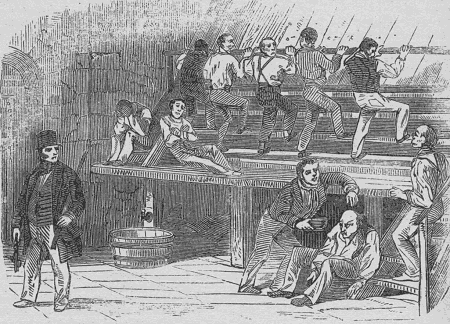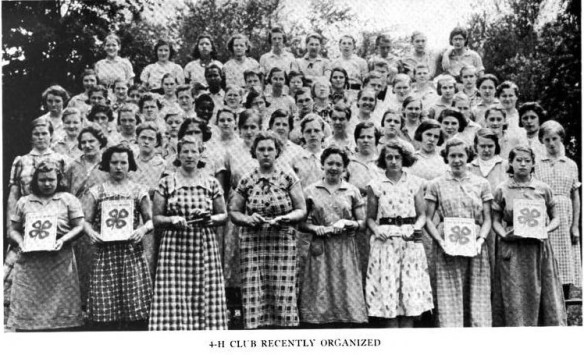“While there are cases where even the law recognizes an abortion as justifiable if recommended by a physician, I assert that the hundreds of thousands of abortions performed in America each year are a disgrace to civilization.”
Margaret Sanger – 1920.
In 1916, Margaret Sanger, a nurse and Progressive Activist, opened a clinic in Brooklyn, New York, to provide women with health education on Birth Control, prevention of venereal diseases, and the use of prophylactics. It is hard for us in the 21st Century to understand why information about contraception was illegal, but it was. The Comstock Law of 1873 “was a federal law that made it a crime to sell or distribute materials that could be used for contraception or abortion, to send such materials or information about such materials through the federal mail system, or to import such materials from abroad.” My particular beef with all the fanfare about what a great woman Margaret Sanger was is the fact that virtually all bloggers intentionally leave out the fact that she was a fervent supporter of the Eugenics Movement in the United States who advocated for the FORCED STERILIZATION of the mentally ill and developmentally disabled.
Was it a good thing to educate women and men about contraception? Yes. Was Margaret Sanger‘s intent to educate women based on the belief that she cared so deeply for them? No. Margaret Sanger was appalled and disgusted by the lower classes, the newly arrived immigrants, prostitutes, mentally ill, blind, crippled, developmentally disabled, and criminal types. Her intent was to rid these defective, delinquent, and dependent people from the American Melting Pot once and for all in order to produce a hearty, healthy, literate breed of educated Americans who would only bring children into this world that they could support and who didn’t drain the economy. She saw the devastation and mutilation to women’s bodies by self-inflicted and botched abortions and thought that abortion itself was barbaric; “that an educated society would never need to resort to such drastic measures.”
Was Margaret Sanger a great woman? You decide. As always, I present the facts and the historical documents FOR YOU TO READ FOR YOURSELF! To learn more about this issue and the history of Eugenics, click on the RED links below.
“The American Birth Control League, Margaret Sanger, President, The Birth Control Review, Volume VI, No. 8, Page 162, August 1922.
PRINCIPLES:
The complex problems now confronting America as the result of the practice of reckless procreation are fast threatening to grow beyond human control. Everywhere we see poverty and large families going hand in hand. Those least fit to carry on the race are increasing most rapidly. People who cannot support their own offspring are encouraged by Church and State to produce large families. Many of the children thus begotten are diseased or feeble-minded; many become criminals. The burden of supporting these unwanted types has to be borne by the healthy elements of the nation. Funds that should be used to raise the standard of our civilization are diverted to the maintenance of those who should never have been born. In addition to this grave evil we witness the appalling waste of women’s health and women’s lives by too frequent pregnancies. These unwanted pregnancies often provoke the crime of abortion, or alternatively multiply the number of child workers and lower the standard of living. To create a race of well-born children it is essential that the function of motherhood should be elevated to a position of dignity, and this is impossible as long as conception remains a matter of chance.
We hold that children should be:
1. Conceived in love;
2. Born of the mother’s conscious desire;
3. And only begotten under conditions which render possible the heritage of health.
Therefore we hold that every woman must possess the power and freedom to prevent conception except when these conditions can be satisfied. Every mother must realize her basic position in human society. She must be conscious of her responsibility to the race in bringing children into the world. Instead of being a blind and haphazard consequence of uncontrolled instinct, motherhood must be made the responsible and self-directed means of human expression and regeneration. These purposes, which are of fundamental importance to the whole of our nation and to the future of mankind, can only be attained if women first receive practical scientific education in the means of Birth Control. That, therefore, is the first object to which the efforts of this League will be directed.
AIMS: THE AMERICAN BIRTH CONTROL LEAGUE aims to enlighten and educate all sections of the American public in the various aspects of the dangers of uncontrolled procreation and the imperative necessity of a world program of Birth Control. The League aims to correlate the findings of scientists, statisticians, investigators and social agencies in all fields. To make this possible, it is necessary to organize various departments:
RESEARCH: To collect the findings of scientists, concerning the relation of reckless breeding to delinquency, defect and dependence.
INVESTIGATION: To derive from these scientifically ascertained facts and figures, conclusions which may aid all public health and social agencies in the study of problems of maternal and infant mortality, child-labor, mental and physical defects and delinquence in relation to the practice of reckless parentage.
HYGIENIC AND PHYSIOLOGICAL instruction by the Medical profession to mothers and potential mothers in harmless and reliable methods of Birth Control in answer to their requests for such knowledge.
STERILIZATION of the insane and feeble-minded and the encouragement of this operation upon those afflicted with inherited or transmissible diseases, with the understanding that sterilization does not deprive the individual of his or her sex expression, but merely renders him or her incapable of producing children.
EDUCATIONAL: The program of education includes: The enlightenment of the public at large, mainly through the education of leaders of thought and opinion—teachers, ministers, editors and writers—to the moral and scientific soundness of the principles of Birth Control and the imperative necessity of its adoption as the basis of national and racial progress.
POLITICAL AND LEGISLATIVE: To enlist the support and co-operation of legal advisors, statesmen and legislators in effecting the removal of state and federal statutes which encourage dysgenic breeding, increase the sum total of disease, misery and poverty and prevent the establishment of a policy of national health nd strength.
ORGANIZATION: To send into the various States of the Union field workers to enlist the support and arouse the interest of the masses to the importance of Birth Control so that laws may be changed and the establishment of clinics made possible in every State.
INTERNATIONAL: This department aims to co-operate with similar organizations in other countries to study Birth Control in its relations to the world population problem, food supplies, national and racial conflicts, and to urge upon all international bodies organized to promote world peace, the consideration of these aspects of international amity.” SOURCE: Birth Control Review, Volumes 5-6, 1920, Page 162.
The Eugenic Value of Birth Control Propaganda by Margaret Sanger
“[The following brief statement of the dependence of any sound and effective program of Eugenics upon BIRTH CONTROL, in view of the Second International Congress of Eugenics, recently held in New York at the Museum of Natural History, assumes a peculiar timeliness.]
Seemingly every new approach to the great problem of the human race must manifest its vitality by running the gauntlet of prejudice, ridicule and misinterpretation. Eugenists may remember that not many years ago this program for race regeneration was subjected to the cruel ridicule of stupidity and ignorance. Today Eugenics is suggested by the most diverse minds as the most adequate and thorough avenue to the solution of racial, political and social problems. The most intransigeant and daring teachers and scientists have lent their support to this great biological interpretation of the human race. The war has emphasized its necessity.
The doctrine of BIRTH CONTROL is now passing through the stage of ridicule, prejudice and misunderstanding. A few years ago this new weapon of civilization and freedom was condemned as immoral, destructive, obscene. Gradually the criticisms are lessening-understanding is taking the place of misunderstanding. The eugenic and civilizational value of BIRTH CONTROL is becoming apparent to the enlightened and the intelligent.
In the limited space of the present paper, I have time only to touch upon some of the fundamental convictions that form the basis of our BIRTH CONTROL propaganda, and which, as I think you must agree, indicate that the campaign for BIRTH CONTROL is not merely of eugenic value, but is practically identical in ideal with the final aims of Eugenics.
First: We are convinced that racial regeneration, like individual regeneration, must come “from within.” That is, it must autonomous, self-directive, and not imposed from without. In other words, every potential parent, and especially every potential mother, must be brought to an acute realization of the primary and central responsibility of bringing children into this world.
Secondly: Not until the parents of the world are thus given control over their reproductive faculties will it ever be possible not alone to improve the quality of the generations of the future, but even to maintain civilization even at its present level. Only by self-control of this type, only by intelligent mastery of the procreative powers can the great mass of humanity be awakened to the great responsibility of parenthood.
Thirdly: We have come to the conclusion, based on widespread investigation and experience, that this education for parenthood must be based upon the needs and demands of the people themselves. An idealistic code of sexual ethics, imposed from above, a set of rules devised by high-minded theorists who fail to take into account the living conditions and desires of the submerged masses, can never be of the slightest value in effecting any changes in the mores of the people. Such systems have in the past revealed their woeful inability to prevent the sexual and racial chaos into which the world has today drifted.
The almost universal demand for practical education in BIRTH CONTROL is one of the most hopeful signs that the masses themselves today possess the diving spark of regeneration. It remain for the courageous and the enlightened to answer this demand, to kindle the spark, to direct a thorough education in Eugenics based upon this intense interest.
BIRTH CONTROL propaganda is thus the entering wedge for the Eugenic educator. In answering the needs of these thousands upon thousands of submerged mothers, it is possible to use this interest as the foundation for education in prophylaxis, sexual hygiene, and infant welfare. The potential mother is to be shown that maternity need not be slavery but the most effective avenue toward self-development and self-realization. Upon this basis only may we improve the quality of the race.
As an advocate of BIRTH CONTROL, I wish to take advantage of the present opportunity to point out that the unbalance between the birth rate of the “unfit” and the “fit,” admittedly the greatest present menace to civilization, can never be rectified by the inauguration of a cradle competition between these two classes. In this matter, the example of the inferior classes, the fertility of the feeble-minded, the mentally defective, the poverty-stricken classes, should not be held up for emulation to the mentally and physically fit though less fertile parents of the educated and well-to-do classes. On the contrary, the most urgent problem today is how to limit and discourage the overfertility of the mentally and physically defective.
BIRTH CONTROL is not advanced as a panacea by which past and present evils of dysgenic breeding can be magically eliminated. Possibly drastic and Spartan methods may be forced upon society if it continues complacently to encourage the chance and chaotic breeding that has resulted from our stupidly cruel sentimentalism.
But to prevent the repetition, to effect the salvation of the generations of the future-nay of the generations of today-our greatest need is first of all the ability to face the situation without flinching, and to cooperate in the formation of a code of sexual ethics based upon a thorough biological and psychological understanding of human nature; and then to answer the questions and the needs of the people with all the intelligence and honestly at our command. If we can summon the bravery to do this, we shall best be serving the true interests of Eugenics, because our work will then have a practical and pragmatic value.”
SOURCE: The Birth Control Review, Dedicated To Voluntary Motherhood, Margaret Sanger, Editor, Volume V., No.10, October 1921, Page 5 (43).
Definitions:
Propaganda – 1. Information, ideas, or rumors deliberately spread widely to help or harm a person, group, movement, institution, nation, etc.
2. The deliberate spreading of such information, rumors, etc.
3. The particular doctrines or principles propagated by an organization or movement. (1)
Race Suicide – The extinction of a race or people that tends to result when, through the unwillingness or forbearance of its members to have children, the birthrate falls below the death rate. (1)
Infanticide – The practice of killing newborn infants. (1)
Abortion – Also called voluntary abortion. the removal of an embryo or fetus from the uterus in order to end a pregnancy. (1)
Feticide – The act of destroying a fetus or causing an abortion. (1)
Eugenics – Selective breeding. The study of or belief in the possibility of improving the qualities of the human species or a human population, especially by such means as discouraging reproduction by persons having genetic defects or presumed to have inheritable undesirable traits (negative eugenics) or encouraging reproduction by persons presumed to have inheritable desirable traits (positive eugenics). (1)
Birth Control – Voluntary limitation or control of the number of children conceived, especially by planned use of contraceptive techniques. (1)
Privation – 1. Loss or lack of the necessities of life, such as food and shelter.
2. Hardship resulting from this. 3.The state of being deprived. (1)
Progressive Movement – A movement for reform that occurred roughly between 1900 and 1920. Progressives typically held that irresponsible actions by the rich were corrupting both public and private life. They called for measures such as trust busting, the regulation of railroads, provisions for the people to vote on laws themselves through referendum, the election of the Senate by the people rather than by state legislatures, and a graduated income tax (one in which higher tax rates are applied to higher incomes). The Progressives were able to get much of their program passed into law. Presidents Theodore Roosevelt and Woodrow Wilson were associated with the movement. (1)
Prophylactic – A protective measure against disease. A device, usually a rubber sheath, used to prevent conception or venereal infection; condom. (1)
Venereal Disease – Any of various diseases, such as syphilis or gonorrhoea, transmitted by sexual intercourse. (1)
SOURCES: 1. Dictionary.com, 2. Fine Dictionary.com.
Additional Reading:
Woman And The New Race by Margaret Sanger, 1920.
The Birth Control Review, Volumes 1-3.
Birth Control Review, Volumes 5-6.
The Trend Of The Race by Samuel J. Holmes, 1921.
Definitions In Political Economy by Rev. Thomas Robert Malthus, 1827.
An Essay On The Principle Of Population by Rev. T.R. Malthus, 1888.

































